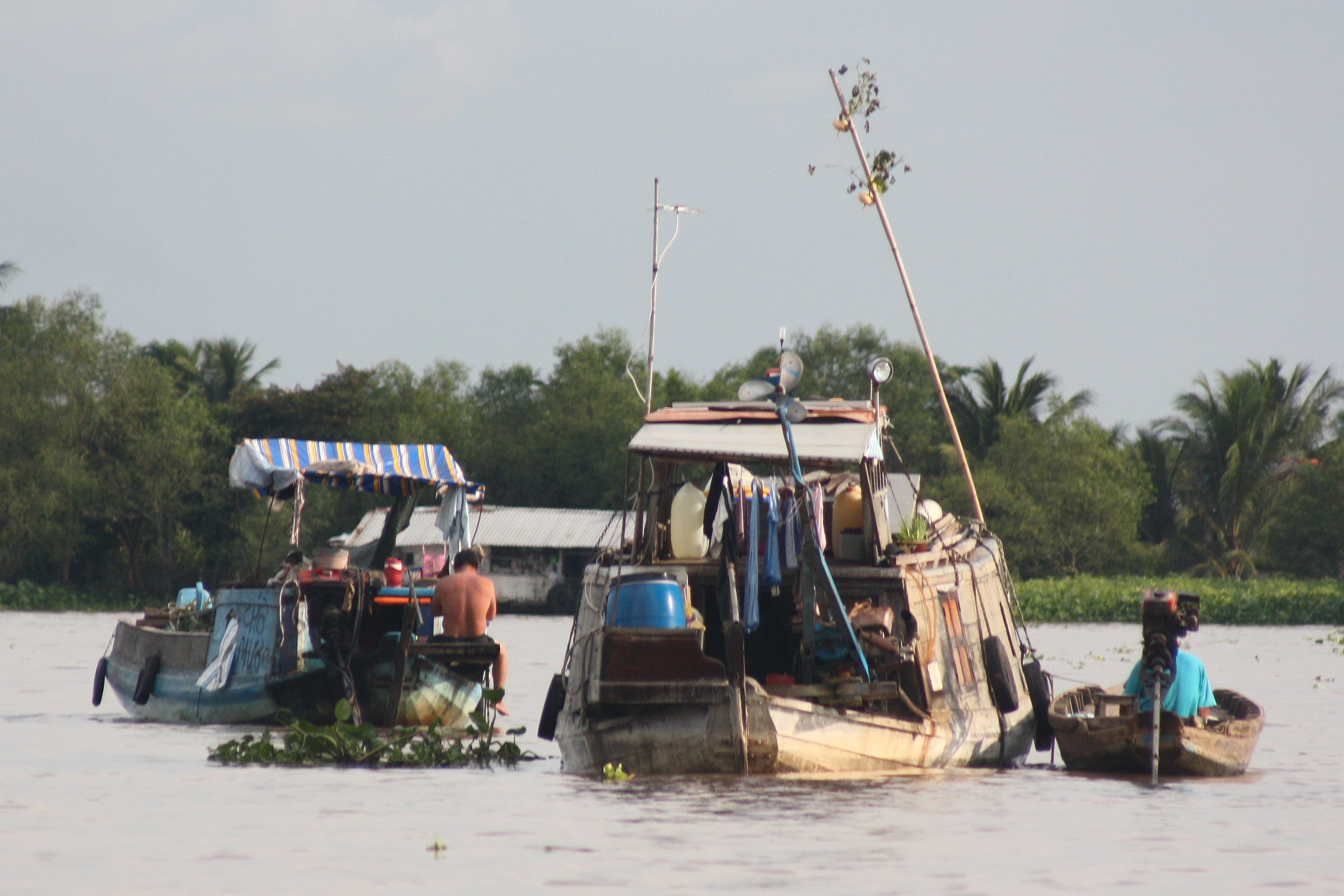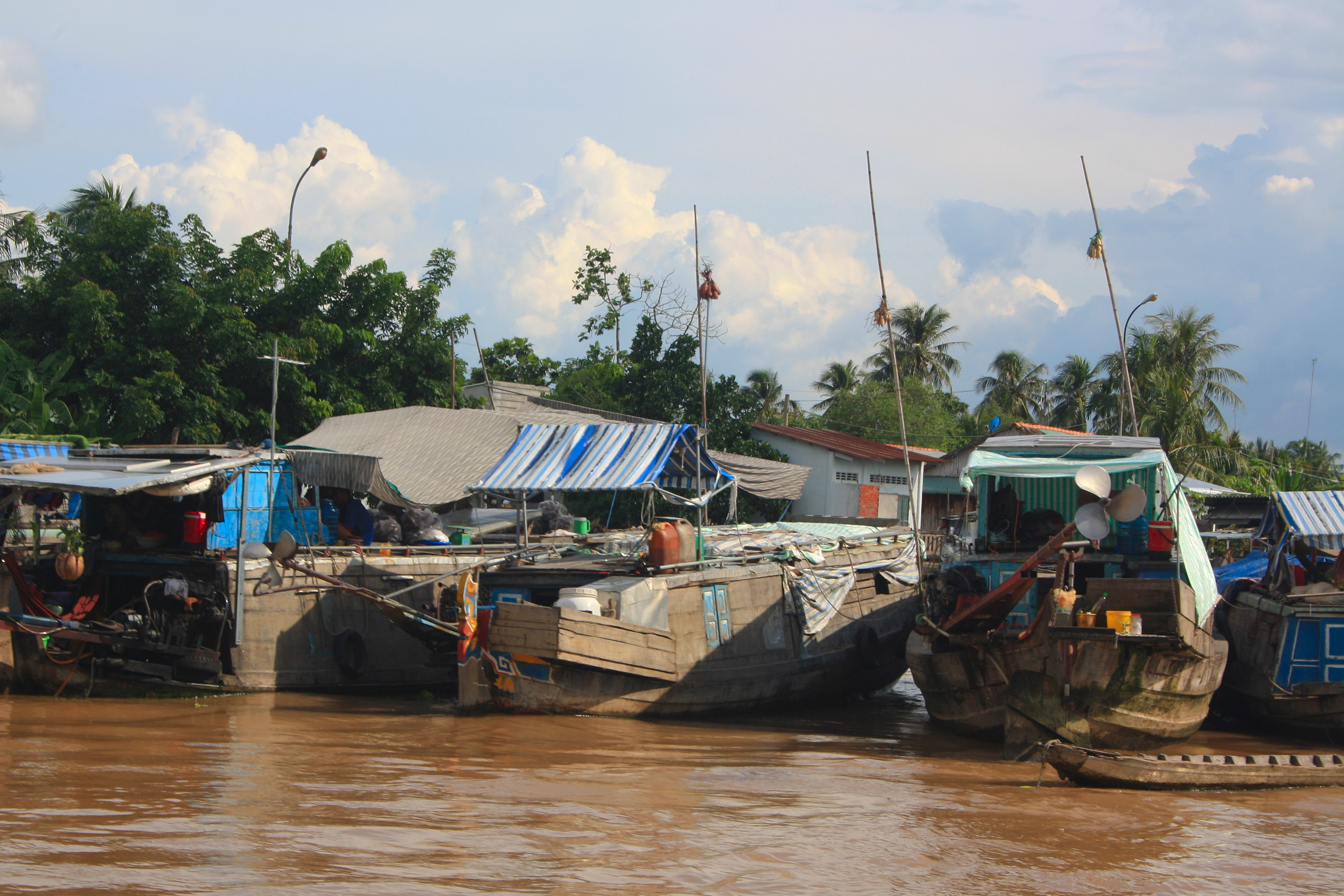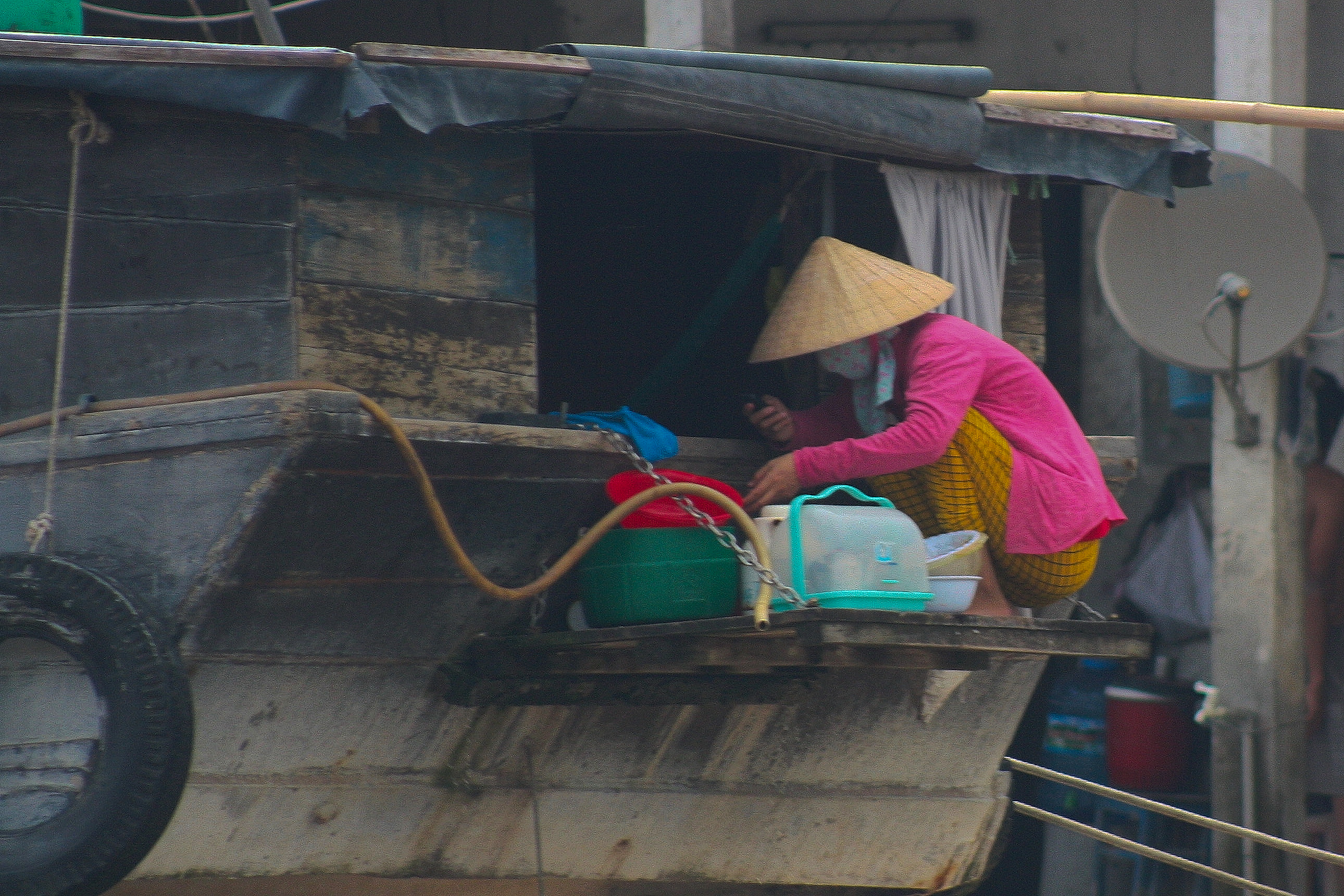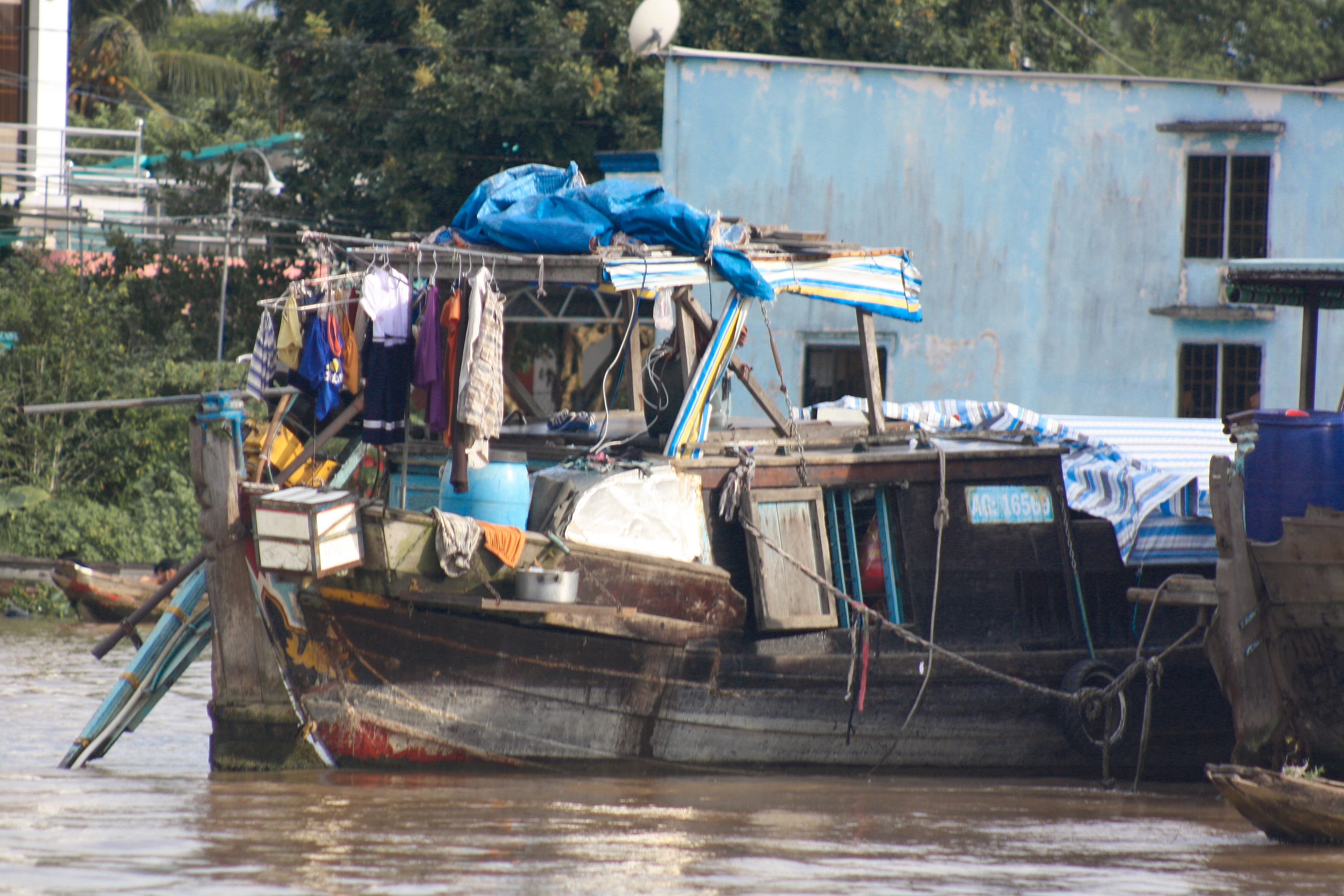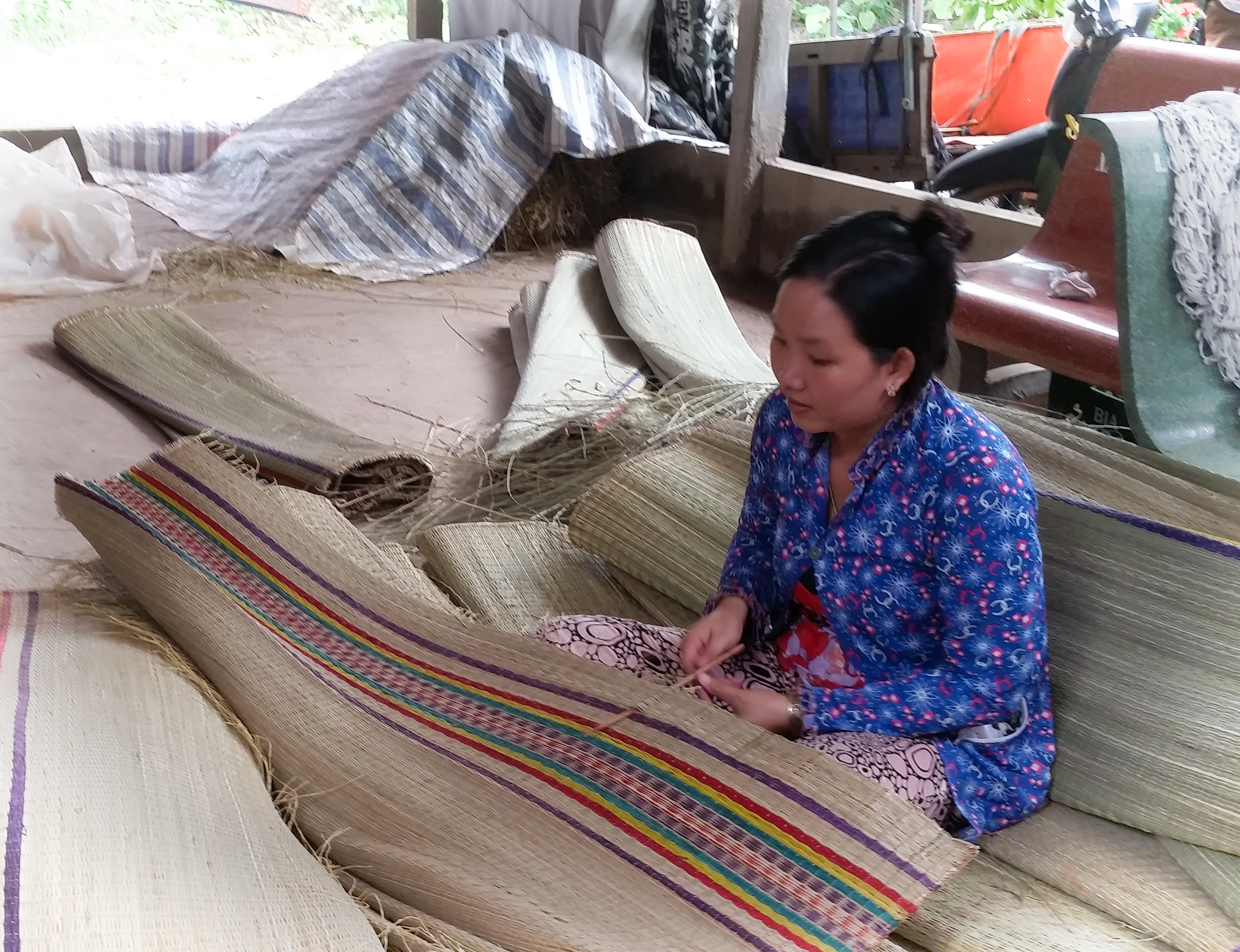
The Mekong is a delta, so it's flat. Very flat. There's not much to see from the main channels except for the dark silhouettes of the banks and
passing water traffic, and as ours was a point-to-point journey there was no opportunity to explore the estuaries, canals, islands,
nature reserves and forests. As a consequence we were keen to visit the Cai Be floating market and get in amongst the clamour and colour of jostling
water craft. Alas we were to be disappointed. The action starts as early as 4a.m. and is all over by 10a.m. We arrived mid-afternoon to a scene of
acquatic inactivity.

The few people who were visible were undertakng chores or lounging about in hammocks. One young lady, hauling water from the estuary in a bucket to tip over herself seemed more concerned at my pointed camera than the fact that these folks shit straight into that same water. Cuppa anyone? The floating markets are changing and shrinking as more roads and bridges are built, transferring the commerce to dry land. A decade ago the largest of the markets, Cai Rang, stretched for 2 kilometres. Apparently it is now much diminished.
From the drop-off at My Tho through to Saigon by bus provides a more interesting insight into rural Mekong life. The Mekong is Vietnam's rice bowl and it shows in the verdant paddies, a common feature of which are collections of above ground graves placed according to feng shui. After 3 years grandma/grandpa's bones are exhumed, cleaned and placed in a small earthenware urn.
